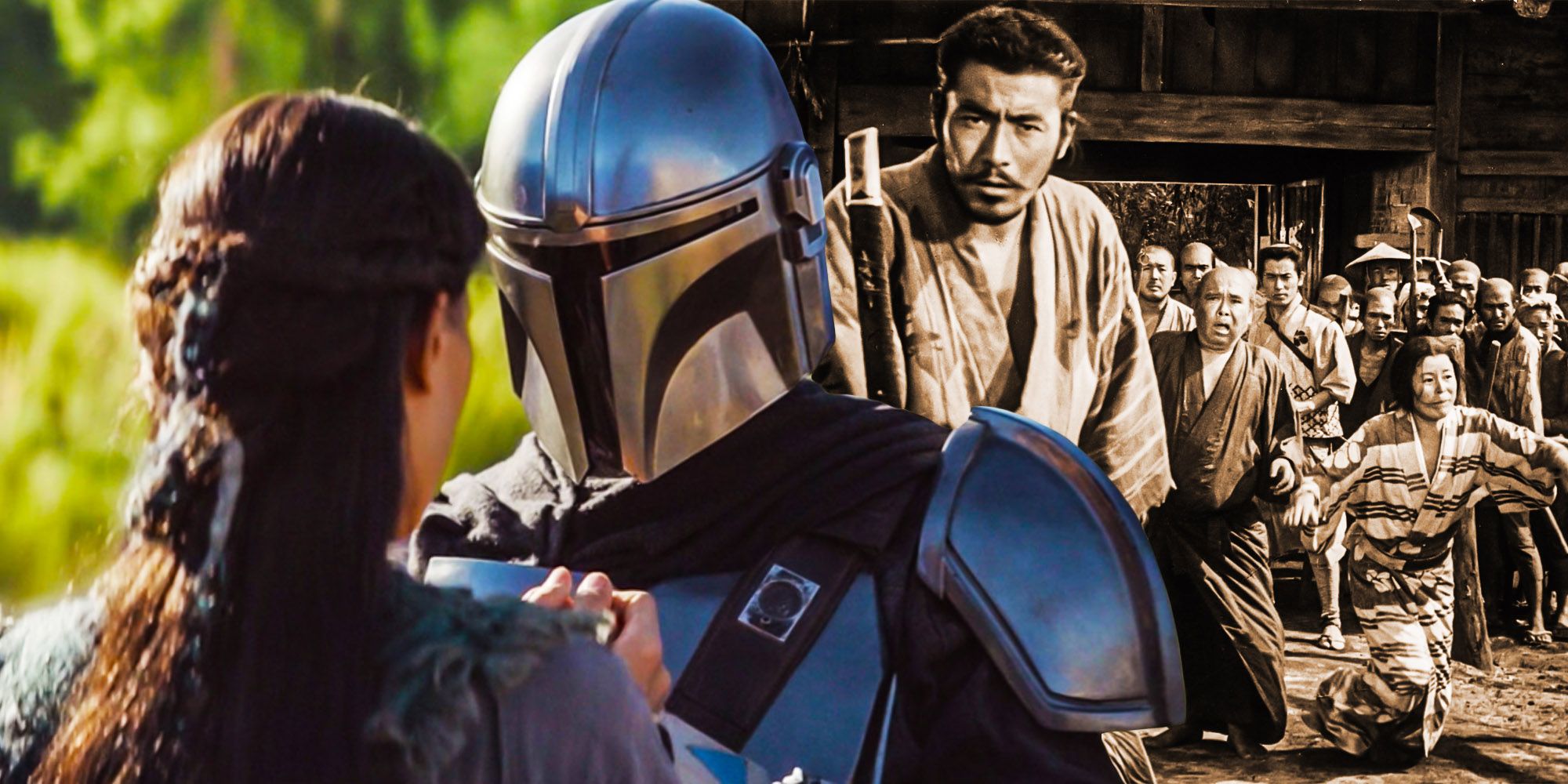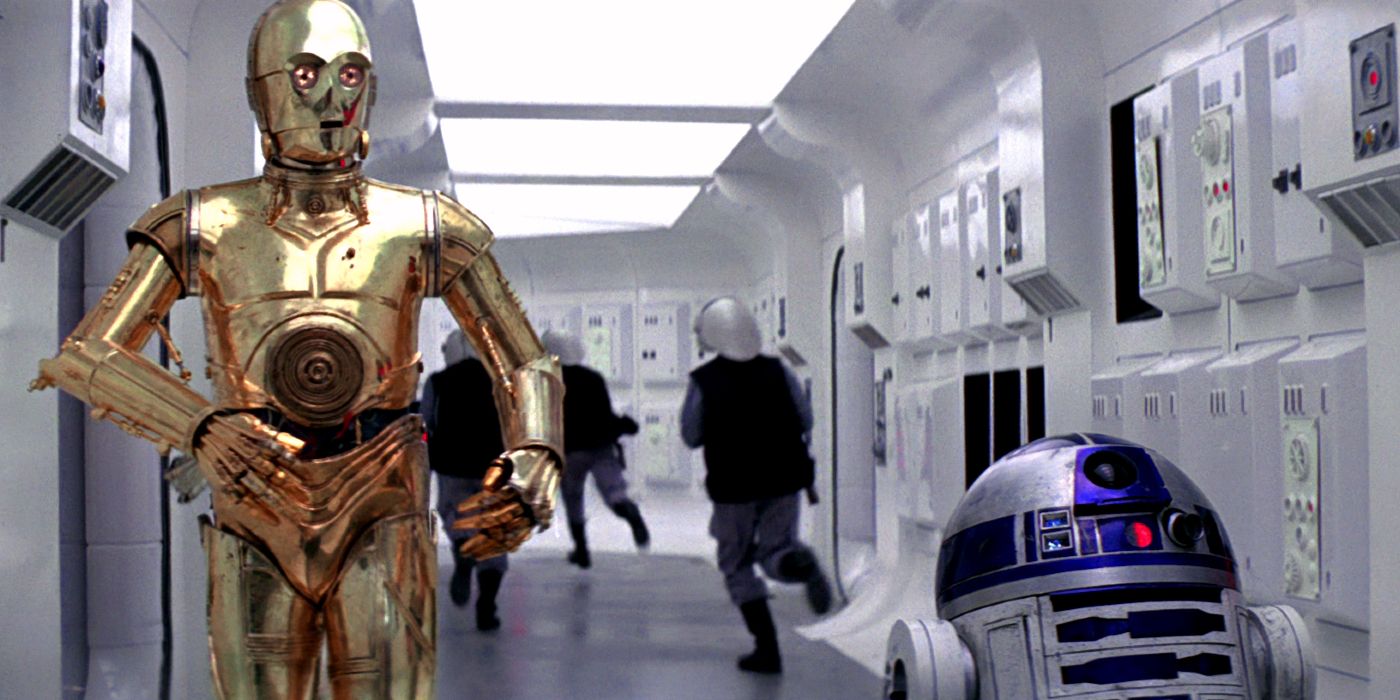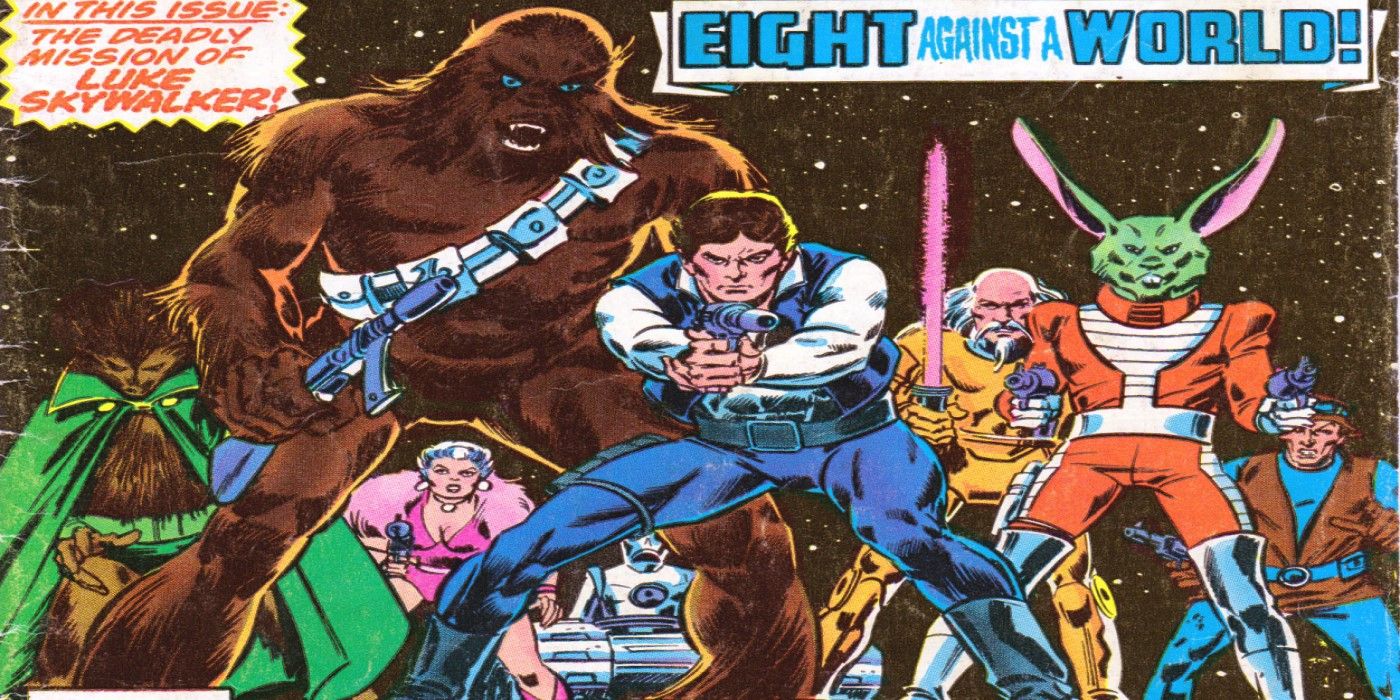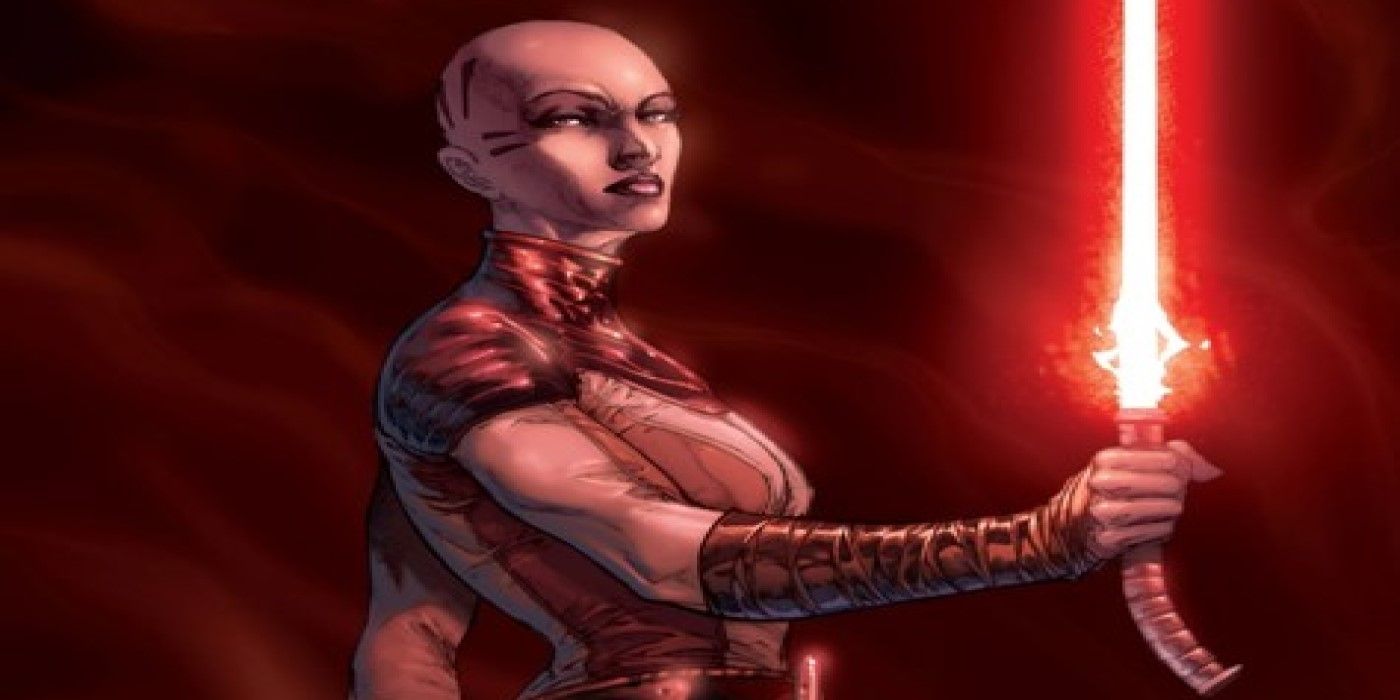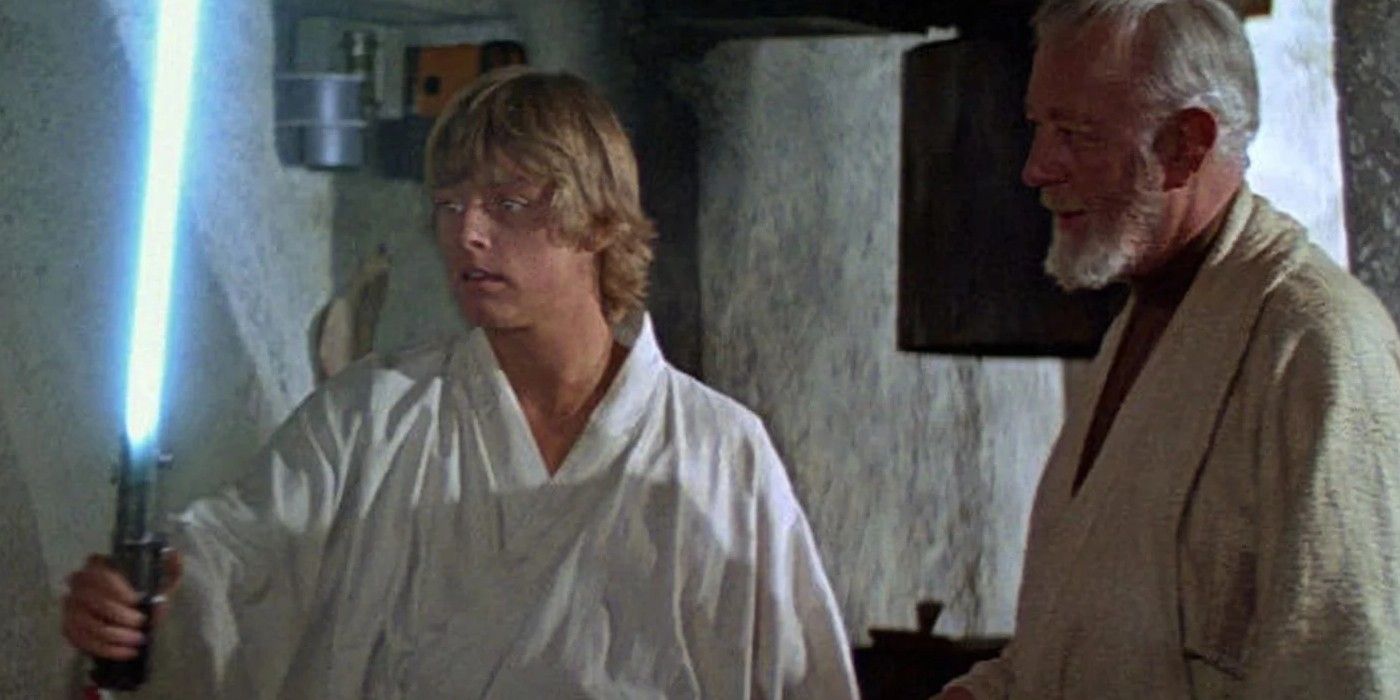While George Lucas' creation of a galaxy far, far away is a wholly original idea, it is impossible not to see the ways Akira Kurosawa inspired Star Wars. Before becoming a massive media franchise and worldwide pop culture juggernaut, Star Wars was a passion project by George Lucas, who sought to make a science fantasy film that honored the movies, film serials, and comic books that he loved in his youth. Kurosawa’s films were a particular favorite of Lucas’, and its influence can be observed in the original six films. Non-movie material from the canon and Legends continuities honor Kurosawa’s films through homages and references as well.
Akira Kurosawa is regarded as one of the greatest filmmakers of all time, and though his movies were made in Japan, they made a big impact on a generation of American filmmakers. Kurosawa's best work is still an influence in Star Wars after George Lucas left the franchise. The filmmaker's contemporaries like Martin Scorsese and Steven Spielberg also count Kurosawa's work as a huge influence. His movies like Hidden Fortress, Seven Samurai, and Yojimbo are widely regarded as some of the greatest movies of all time.. Looking back on the saga, it is still fascinating to see all of Kurosawa's work represented.
The Hidden Fortress
There are many ways Kurosawa inspired Star Wars but his 1958 film The Hidden Fortress, had one of the biggest impacts. George Lucas intentionally used numerous story elements and character archetypes from The Hidden Fortress in Star Wars, most famously with C-3PO and R2-D2. Just as The Hidden Fortress is largely told from the perspective of two peasants, who constantly bicker with each other as they go from one perilous situation to the next, Star Wars follows Artoo and Threepio until the introduction of Luke Skywalker on Tatooine.
Similarly, Rokurota Makabe, a general of a now-defeated noble family, was referenced through Obi-Wan “Ben” Kenobi, a former general in the Clone Wars and one of the last surviving members of the extinct Jedi Order. Before casting Sir Alec Guinness as Kenobi, Lucas initially wanted Toshiro Mifune to play the venerable Jedi. Rokurota famously dueled his rival, Hyoe Tadokoro, and defeats him, leaving him scarred but alive, Lucas references this in Obi-Wan’s battle with Darth Vader on Mustafar, where he spares the Sith Lord but leaves him disfigured.
The Hidden Fortress also features a Rebel Princess as part of its main cast. Princess Yuki is one of the few survivors of the Akizuki clan, just as Leia is one of the few Alderaanians in the galaxy, following the Empire’s destruction of the peaceful world. In addition to its characters and unique perspective, Lucas also referenced Kurosawa through cinematography. The Star Wars franchise is famous for its use of wipe transitions, which Lucas used as a reference to The Hidden Fortress.
Seven Samurai
Kurosawa’s 1954 epic Seven Samurai is easily one of his most famous films. Unsurprisingly, it’s also one of his most remade films, both officially and unofficially, in pop culture. Seven Samurai tells the tale of a small group of Ronin who defend an otherwise helpless farming village from an onslaught of marauders. The Star Wars franchise has adapted this famous story template three times, beginning with one of the very first Legends-era Star Wars stories. Marvel’s Star Wars comics predated Splinter of the Mind’s Eyeas some of the first Expanded Universe properties, and their first original story set after A New Hope was a multi-issue adaptation of Kurosawa’s epic.
In Star Wars issues 8 through 10, Han Solo and Chewbacca formed a motley crew of warriors called the “Star-Hoppers of Aduba-3,” to defend the farming village of Onacra from the vicious criminal gang known as the Cloud-Riders (who would later be drastically reimagined in canon’s Solo: A Star Wars Story). In canon’s Star Wars: The Clone Wars, a season 2 episode sees three Jedi and four bounty hunters defending a Felucian farming community from Hondo Ohnaka’s pirate gang. Even more recently, a season one episode The Mandalorian has Din Djarin and Cara Dune protect a Sorgan village from Klatooinian raiders.
Other Akira Kurosawa References
While The Hidden Fortress and Seven Samurai are the most referenced Kurosawa films in Star Wars, they are not the only ones. While Star Wars had plenty of inspiration from westerns, especially in regards to the franchise’ criminal underworld, a scene in 1961’s Yojimbo was referenced in A New Hope. Ben Kenobi dispatching a pair of criminals (who brag about their heinous crimes), including cutting off the arm of one, references Yojimbo’s Kuwabatake Sanjuro in a similar scenario. Star Wars also references its sequel, 1962’s Sanjuro, when Han, Chewbacca, and their passengers hide under the floorboards of the Millennium Falcon, just as several samurai do in Kurosawa’s film.
The Star Wars franchise’s non-movie material also references other Kurosawa films. In canon, the Clone Wars episode “Lightsaber Lost” is an homage to Kurosawa’s 1949 crime drama, Stray Dog. In The Clone Wars, Ahsoka’s lightsaber is stolen on Coruscant, leading her to pursue the thief and his associates through Coruscant’s criminal underworld, just as Detective Murakami tracks his stolen pistol as part of a case in Stray Dog. In the Star Wars Legends continuity, Asajj Ventress, a Rattataki and the ruler of her homeworld Rattatak, was named after Asaji, a major character in Akira Kurosawa’s 1957 Macbeth adaptation, Throne of Blood, at the recommendation of Lucasfilm executive Leland Chee.
What Else Inspired Star Wars
While the way Kurosawa influenced Star Wars are undeniable, George Lucas cleverly drew from a lot of different types of stories to create this epic and fully realized galaxy. Seeing all the things that he took from doesn't make the Star Wars movies feel any less original as it takes a true storyteller to be inspired by someone else's work and use it to make something that is completely fresh and in their own voice. That is what Lucas was able to do with so many different influences.
Among the inspirations for Star Wars were the Buck Rogers and Flash Gordon movie series, which Star Wars referenced through single-biome planets and its famous opening crawl. J. R. R. Tolkien’s Middle-earth also had a strong influence on Lucas, with Obi-Wan Kenobi and Luke Skywalker sharing a similar relationship to Gandalf and Frodo, as well as glowing blue swords being used by heroes while villains use burning red ones. Marvel Comics, whose adaptations currently dominate pop culture, also had a mild impact on Star Wars through Doctor Doom, a diabolical sorcerer who wears a cloak over a full suit of body armor and was a visual inspiration for Darth Vader.
Real-world historical conflicts and warriors also inspired the Star Wars franchise. The overarching political story of the saga shows how a democracy becomes a fascist state through the gradual forfeiting of freedom by its people, and how those who oppose fascism will band together and defeat it. The Galactic Civil War, particularly its dogfights, was inspired by World War II aerial combat, and whether intentional or not, the heroic Jedi have much in common with medieval knights, feudal samurai, and Maccabean rebels. Given the number of references to the films of Kurosawa, whose movies were often set in feudal Japan, the similarities between Jedi and samurai are particularly evident.

